Jan
16
2010
 .
.
Till Australia Day (January 26), just pay postage and get the review edition of Totus Christus for free – before they are all gone.
(The final edition will most likely be three separate books.)
Postage to U.S. is currently US$30.
Australia is AU$12.
PayPal to mbull [at] bullartistry [dot] com [dot] au
3 comments | posted in Totus Christus
Jan
16
2010
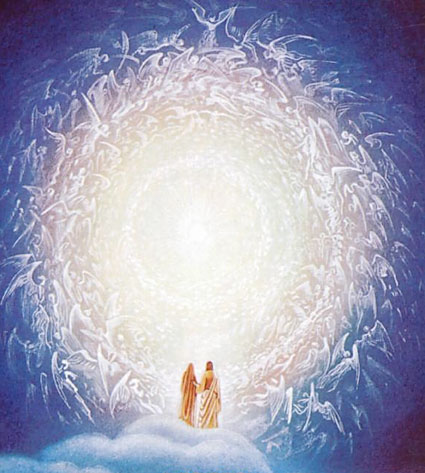
Then He said, “Do not draw near this place. Take your sandals off your feet, for the place where you stand is holy ground.” Exodus 3:5
A sacrifice is literally a nearbringing. James Jordan suggests that instead of sacrifice or offering, a better translation of the word qorban would be “nearbringing”:
“The English “sacrifice” tends to connote the idea of giving something up for someone else. That has little if anything to do with qorban. “Offering” tends to connote a gift, which again has nothing to do with qorban. The word means to draw near, to get into close relationship with someone, and it is used only in relationship to God. We do not worship God by giving Him anything, for He needs nothing. We do not worship God by giving up anything good, for He is the one who has given us all good things. We worship God by drawing near to Him.” [1]
The first nearbringing was the marriage Covenant between Adam and Eve. There was blood when Adam was “divided” so that Eve might be “constructed.” [2] And we can assume that when Adam and Eve were first physically united there was also blood.
Continue reading
Comments Off | tags: Genesis, James Jordan, Peter Leithart | posted in Biblical Theology, Quotes, The Last Days
Jan
15
2010
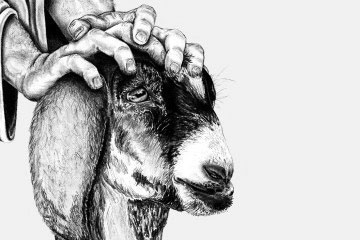
6. Jesus Christ was not judge of the quick and the dead, because (according to preterists) He only judged the dead.
Jesus judged between the living and the dead in AD70. The true bride and the false bride were bodies of living people. Of course, part of the true bride was the Old Covenant saints (those “under the Altar”) who were dead.
Continue reading
4 comments | tags: Atonement, Daniel, David, High Priest, James Jordan, Leviticus, Peter Leithart, Postmillennialism, Saul, Temple | posted in Against Hyperpreterism, Biblical Theology
Jan
15
2010
Personal and structural…
“Jordan’s definition of the covenant is striking. Continue reading
Comments Off | tags: Covenant Theology, James Jordan, Marriage, Ralph Smith | posted in Biblical Theology, Quotes
Jan
15
2010
“Or those eighteen, on whom the tower in Siloam fell, and slew them, think you that they were sinners above all men that dwelled in Jerusalem?” Luke 13:4.
As we follow the incomprehensible aftermath of the Haiti earthquake, we are tempted to ask, “Why them?”
That’s the wrong question. The right question is, “Why wasn’t it me?”
“I tell you, No: but, except you repent, you shall all likewise perish.” Luke 13:5
Comments Off | tags: Haiti, Judgment, Luke | posted in Christian Life
Jan
15
2010
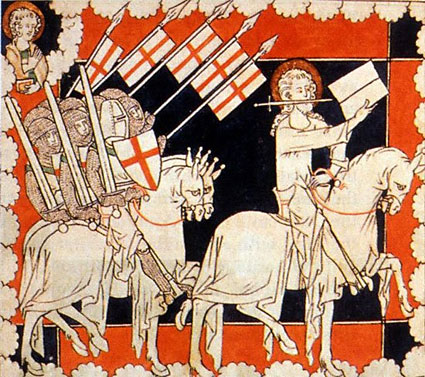
3. 97,000 Jews got away scot free from Revelation 19: 21.
“And the rest were killed with the sword which proceeded from the mouth of Him who sat on the horse. And all the birds were filled with their flesh.”
Continue reading
2 comments | posted in Biblical Theology, The Last Days
Jan
14
2010

Here’s the first of my replies to Brian’s contentions. I’ve put a 50 Failed Predictions? link under featured articles so all posts in this series are easy to find.
1. The bodies and souls of the wicked were not thrown into Gehenna (Matt. 10: 28).
Gehenna was the Valley of Hinnom. It was the site of the child sacrifices before the exile. The Lord atoned for this shedding of innocent blood to false gods by filling it with the bodies of the idolaters—a mass grave. Then the Land was ceremonially clean. Fittingly, Ge-Hinnom was the site of Jeremiah’s terrifying threats in Jeremiah 18, which Paul draws upon in Romans 9:21.
Continue reading
10 comments | tags: Genesis, Herod, Tabernacle, Tophet | posted in Biblical Theology, The Last Days
Jan
13
2010
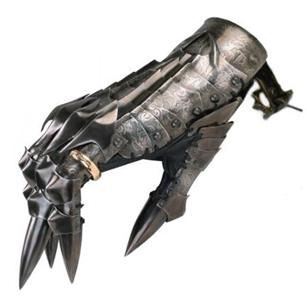 Brian Simmons posted some great points of contention on his anti-Preterist blog last June:
Brian Simmons posted some great points of contention on his anti-Preterist blog last June:
50 Failed Predictions for Fools Who Say Christ Returned in AD70
Brian’s a great bloke and a good thinker. He fights the heresy of hyperpreterism, but I reckon he’s thrown the baby out with the bathwater. And how could I refuse such a challenge! Who can resist a list?
Continue reading
4 comments | posted in Against Hyperpreterism, Biblical Theology
Jan
13
2010
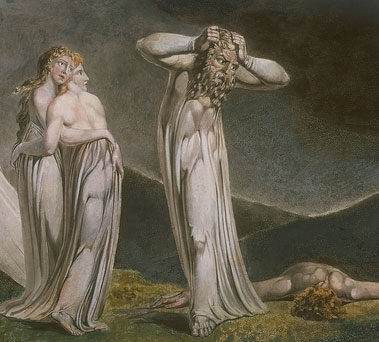
“Peter came to Him and said, ‘Lord, how often shall my brother sin against me, and I forgive him? Up to seven times?’ Jesus said to him, ‘I do not say to you, up to seven times, but up to seventy times seven.’” (Matthew 18:21-22)
Genesis 4 seems to contain two “feast” cycles. Near the end of the first, at “Atonement”, the Lord set a mark upon Cain to protect him from vengeance. As on the Day of Covering after Adam’s sin in Eden, the full weight of the law was withheld. Cain complained that his “liability” was greater than he could bear. Cain was covered but he still went from the presence of the Lord, as the goat which carried the sins into the wilderness. It seems Cain despised mercy.
Just as the Lord and the Land were two witnesses against his crime, he now fled from the face of the Lord and the face of the Land. Only the High Priest could face God, standing in the Veil, the firmament between heaven and earth. Abel was the true facebread, the authorised priest. [1]
Continue reading
6 comments | tags: Abel, Abraham, AD70, Atonement, Azal, Cain, Esau, Genesis, Herod, Jacob, Lamech, The flood | posted in Biblical Theology, The Last Days
Jan
12
2010
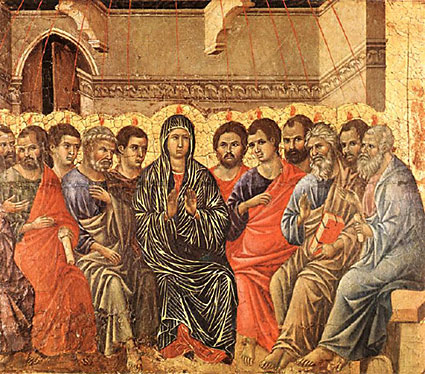
“I indeed baptize you with water unto repentance, but He who is coming after me is mightier than I, whose sandals I am not worthy to carry. He will baptize you with the Holy Spirit and fire.” Matthew 3:11
I remember a scene from X Files where they printed out a binary code and laid the pages out on the floor. When viewed from a distance the ones and zeros made the image of a face. There was a similar scene in one of the Indiana Jones movies, where there was a search for a secret passage and it turned out to be a large X on the floor when viewed from above. This is just my view, but it seems a lot of theologians spend a great deal of time walking in circles in the jungle, lost in the details of prooftexts when we have Old Testament “Google maps” at our fingertips.
Continue reading
2 comments | tags: Baptism, Bible Matrix, Film, John the Baptist, Pentecost, Tabernacle, Tongues | posted in Biblical Theology, The Last Days

































